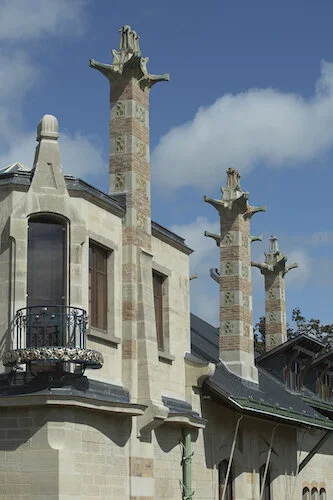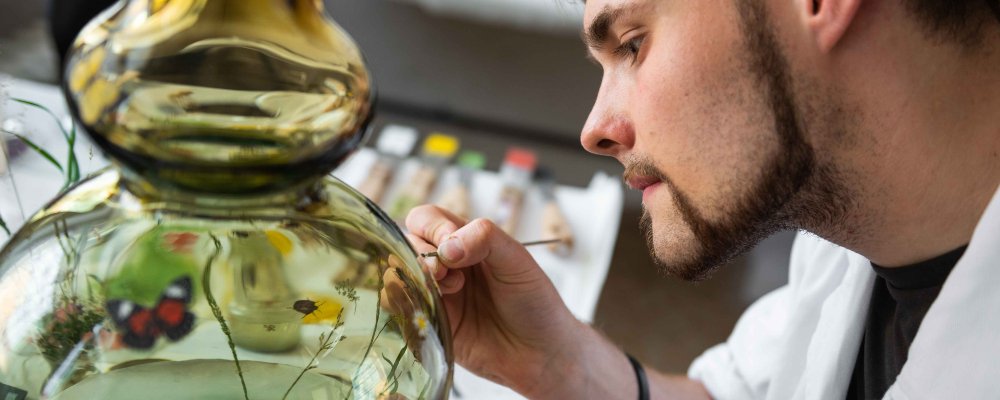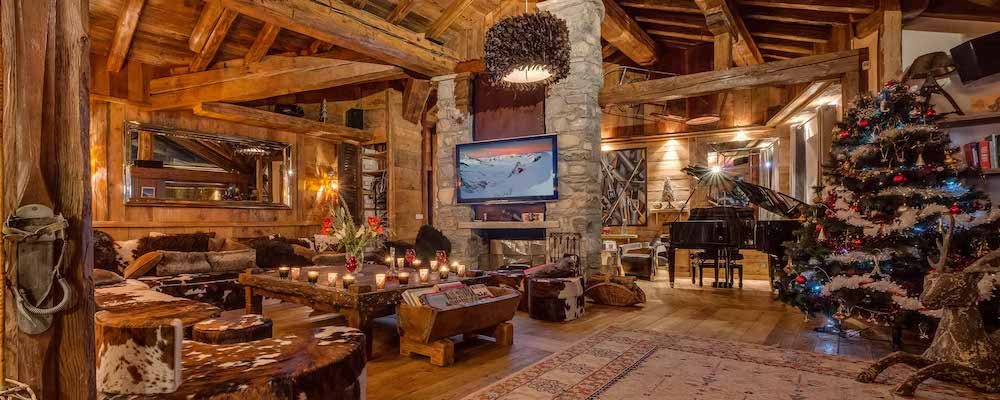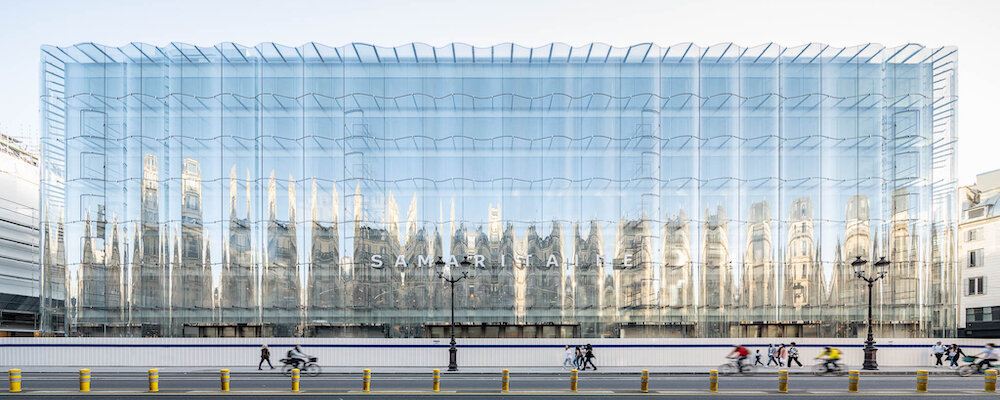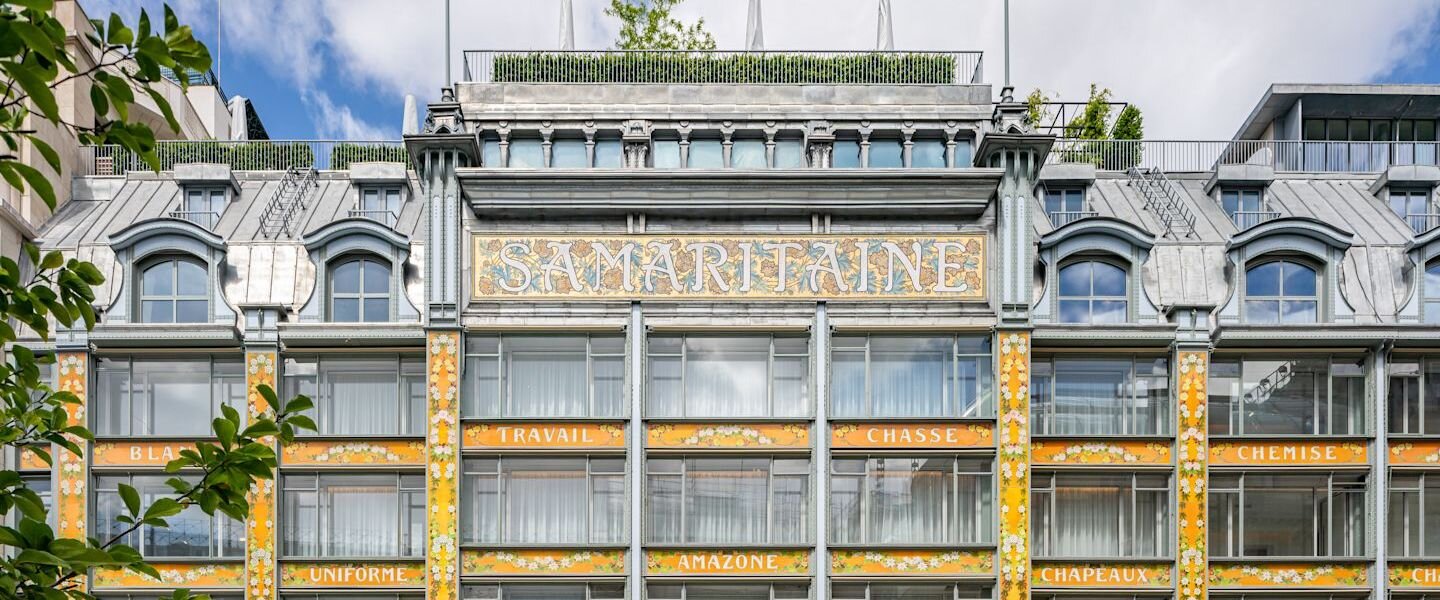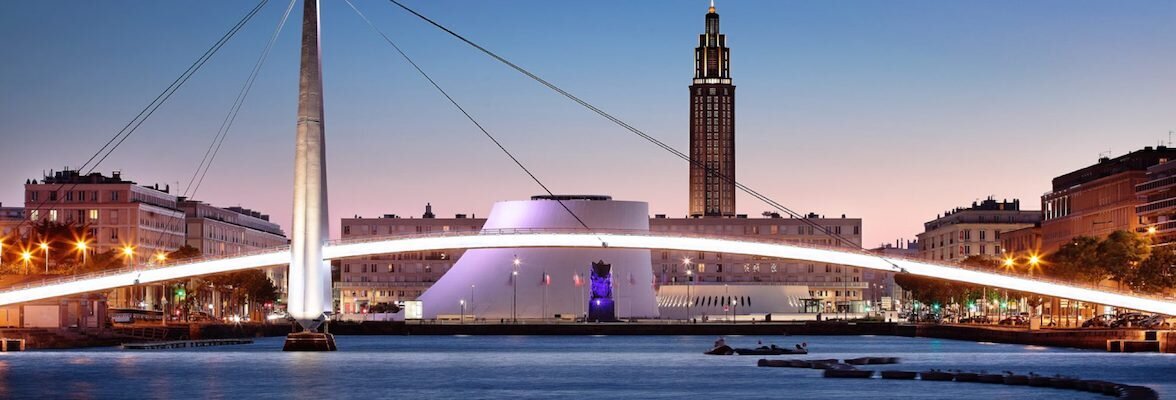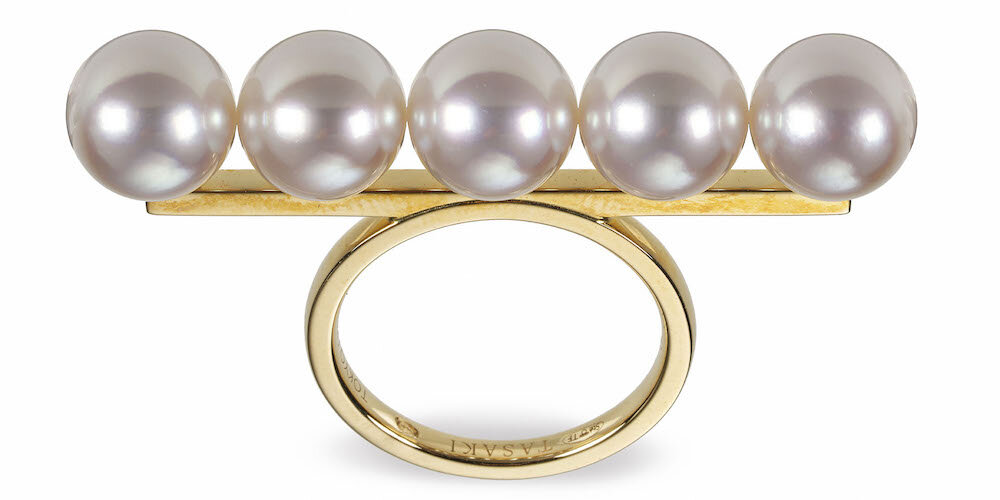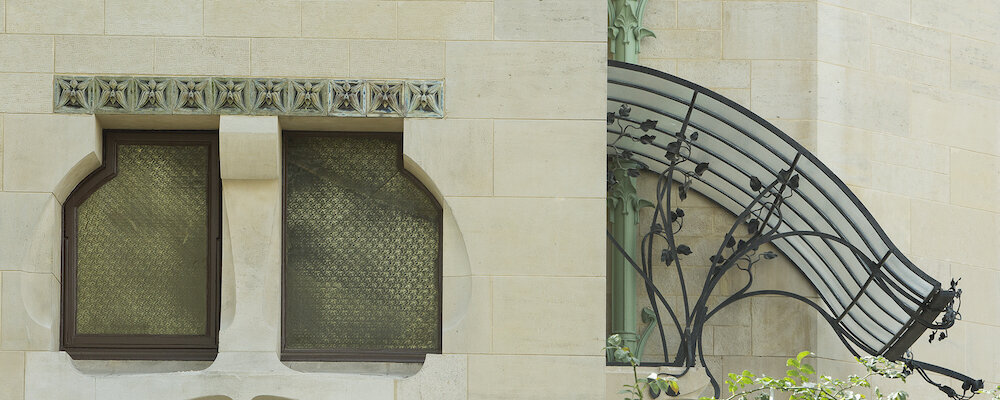Villa Majorelle
After over two years of intensive renovation, one of France’s jewels of Art Nouveau is reopening on February 15th & 16th, 2020. The Villa Majorelle will offer a splendid testimonial of this period to the visitors.
Nancy is the home of the finest examples of Art Nouveau in France.
In 2017, the city council announced the renovation of the iconic Villa Majorelle.
The meticulous restoration not only includes the exteriors but also the original decoration and furnishings of the reception rooms and bedroom.
Additionally a journey through time to explore the artist’s family life will be allow visitors to better understand who Louis Majorelle was.
A house built by an artist, for an artist
Louis Majorelle (1859-1926) was the son of an established furniture maker, specialised in Japanese-style objects. Louis was considering a career as a painter but took over his father’s business after his death. The company employed over 20 workers.
Under Louis’ leadership, the company launched into the production of modern furniture, influenced by nature and by Emile Gallé: it was an immediate success.
With the help of his brother, Jules, the company set out to conquer the Parisian and international markets. In 1904, they opened a retail store on in Paris, London, Berlin, Lyon, Lille and even Oran.
In 1898, Louis Majorelle gave the architect Henri Sauvage (1873–1932), the task of drawing up plans for his personal home in Nancy. Despite his young age (26) and relative inexperience, Majorelle preferred him to the Nancy architect Lucien Weissenburger, who had just built his workshops and been given the job of carrying on the project. His choice was based partly on the Parisian architect’s creative boldness and partly on the network of artists who would be called upon to take part in the project. It was also an opportunity for Majorelle to show Nancy some original conceptual ideas.
Villa Majorelle - or Villa Jika, named using the initials of Louis Majorelle’s wife, Jane Kretz - was built in 1901–1902. It was the first completely Art Nouveau house in Nancy. The flowing forms and decorative motifs and the continuous interplay between the exterior and the interior make Villa Majorelle an example of success fully applying the notion of artistic unity, advocated by a large number of artists of the period.
A new style
Louis Majorelle wanted a house that reflects the spirit of his work: modernity, dynamism and unostentatious simplicity. Of a reasonable size, it was designed first and foremost for the people who lived in it and their day-to-day comfort. Sauvage thought about living space before elevation, interior layout before academic ideals.
Sauvage took care of the fixed decoration, which included the ironwork, and called in other artists for specific tasks.
His Parisian friends, the ceramic artist Alexandre Bigot and the painter Francis Jourdain, respectively created the flambé stoneware exteriors and interiors and the decorative paintings in the dining room.
Unsurprisingly, Louis Majorelle designed the furniture.
Nancy’s master glazier, Jacques Gruber, was given the task of designing the stained-glass windows in the main rooms (stairwell, dining room, living room and the Majorelles’ bedroom).
The concrete structural works were carried out by the construction company France-Lanord et Bichaton.
The renovation of villa Majorelle 2016–2022
After Louis Majorelle’s death in 1926, his only son, the painter Jacques Majorelle, who lived in Morocco, decided to sell the house. It was bought by the government and housed a variety of administrative services until 2017. The gradual rediscovery of Art Nouveau heritage led to Villa Majorelle being listed as a Historic Monument in 1975 then classified in 1996. Nancy City Council has owned the house since 2003.
Since 2007, guided tours have been offered at weekends, their success reflecting the public’s interest in this highly original building. The Ministry of Culture awarded it the national “Maisons des Illustres” (‘Homes of the Famous’) mark in 2011.
The house’s current condition is the result of successive interventions that have changed its appearance to varying degrees. The changes made during Louis Majorelle’s lifetime were based on decisions made by the artist, in particular following the damage suffered during the bombing in 1916.
The removal of the south terrace on the second level, the decision not to replace the pine stained-glass window in the living room with an exact copy and the closure of the north terrace were key stages to which it would have been risky to return. As much as possible, it was therefore decided that the first stage would be the known condition prior to 1926, as long as the work did not have any effect on the Villa’s structural condition.
A committee was created to careful supervise the restoration of the house, preparing Villa Majorelle to welcome daily visitors.
The renovation included external works (2016-2017, budget: EUR 720,000), interior assessment in 2018 with a thorough interior renovation since early spring 2019 (budget: EUR 1,800,000). Additional work will carry on until 2022 with the creation of an educational section.
Nearly 100 items of furniture, paintings and objets d’art from the Musée de l’École de Nancy collections are on show in the Villa.
The rooms have been reconfigured as a result of the acquisition by the Musée de l’École de Nancy since 1983 of works from the Villa or identical pieces; contemporary objects have also been selected from within the museum’s collections.
The furniture from the Majorelle house is mostly original but other items identical to those present in the Villa have had to be researched and found.
From February 2020, the Villa Majorelle will offer an immersive experience of Nancy from the 1900s, with the feeling of entering the private life of the Majorelle family.
Save The Date for the inaugural weekend: February 15th and 16th, 2020. Tours of the Villa, a historic trail between the Villa and the Musée de l’École de Nancy, activities... The weekend will be totally dedicated to lovers of Villa Majorelle and Art Nouveau!
Pre-book your visit: tickets can be booked online on the Musée de l’École de Nancy website.
Pictures courtesy of Philippe Caron, S.Levaillant, P. Mignot, M. Bourguet.





